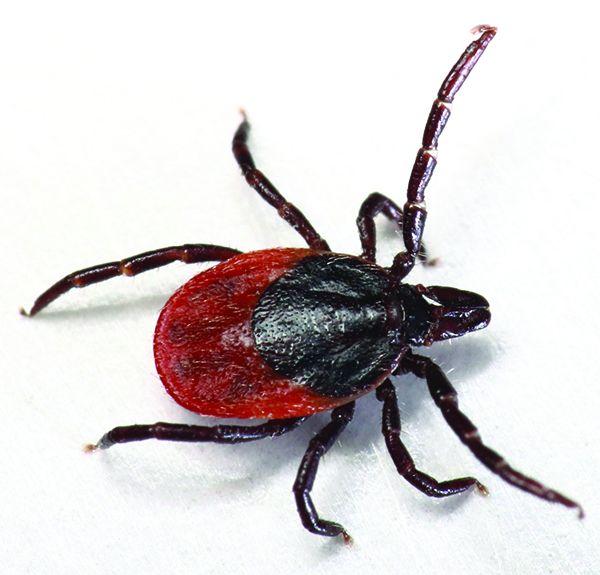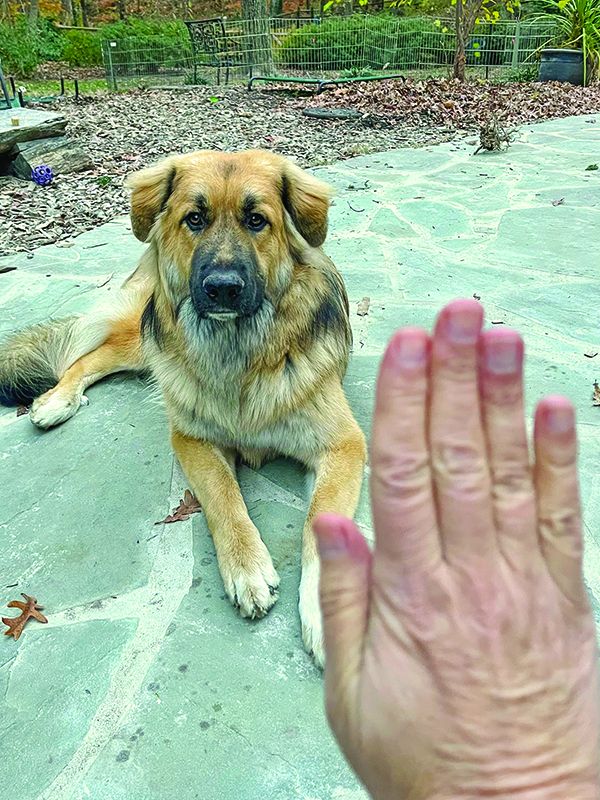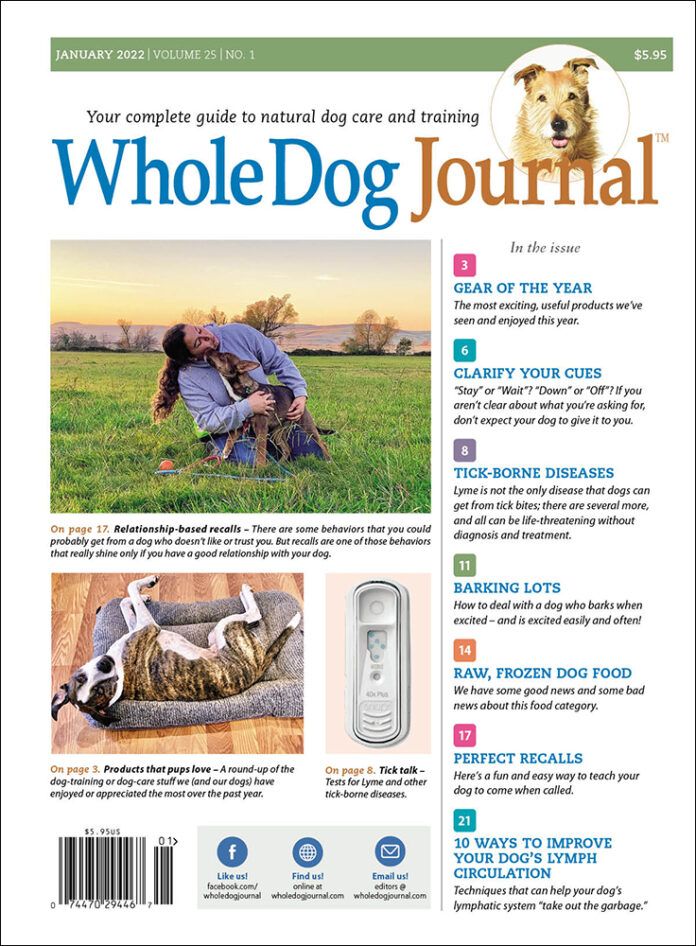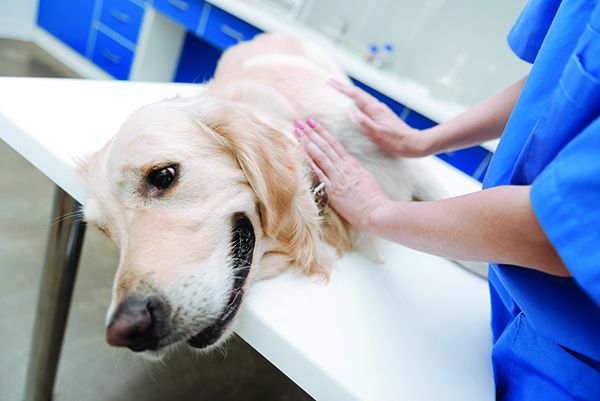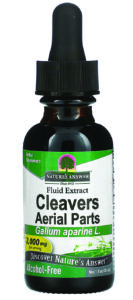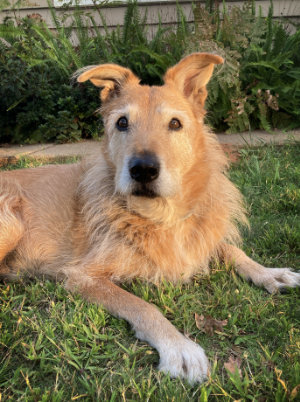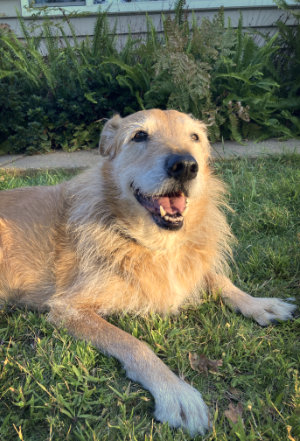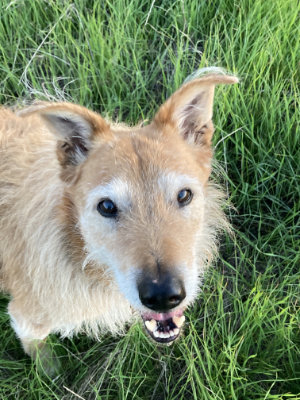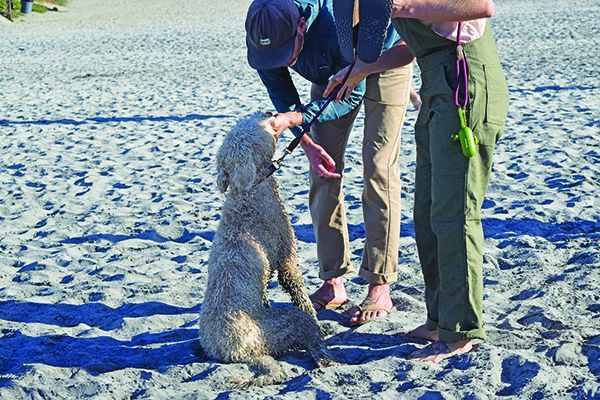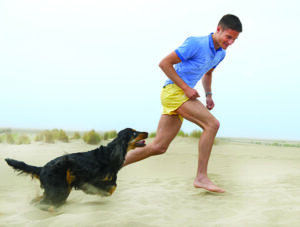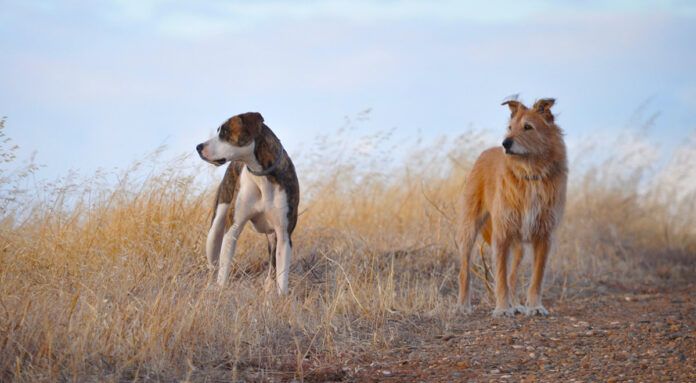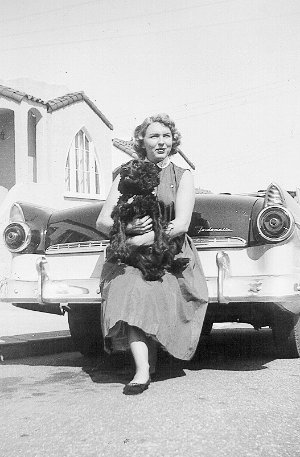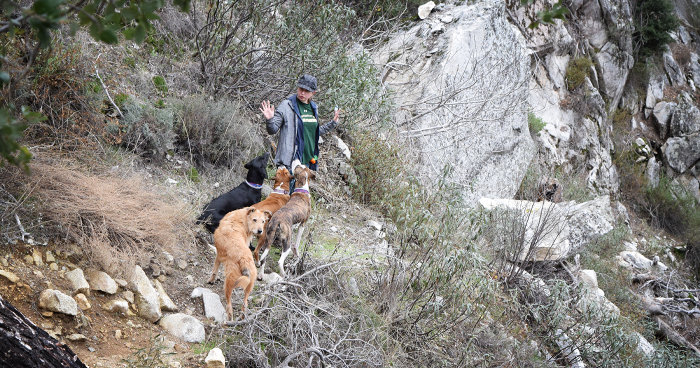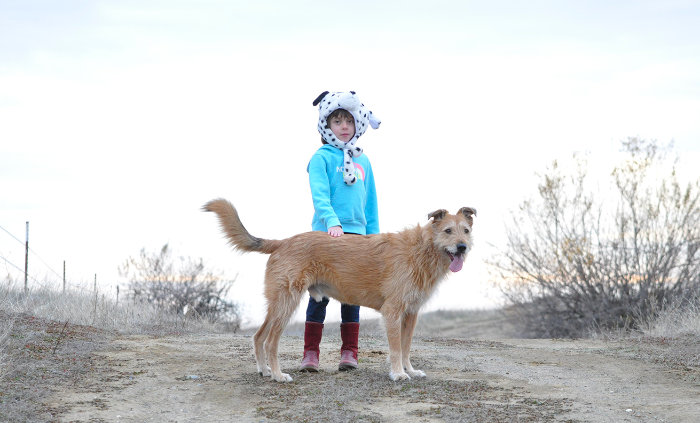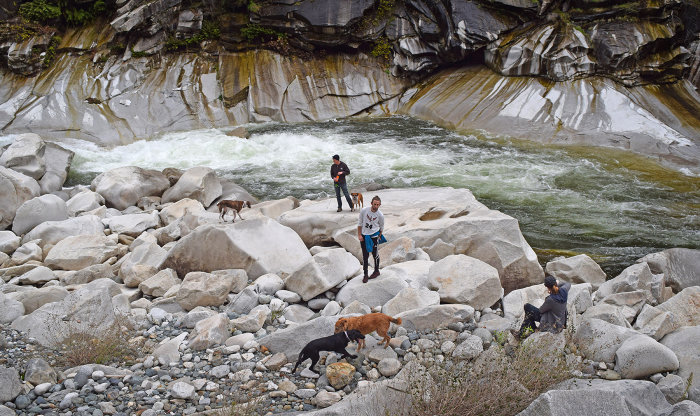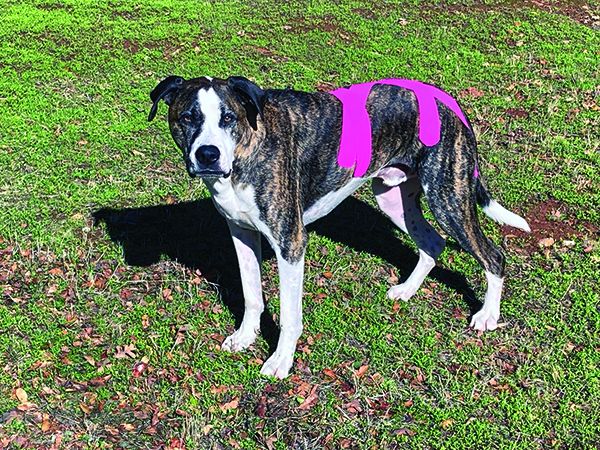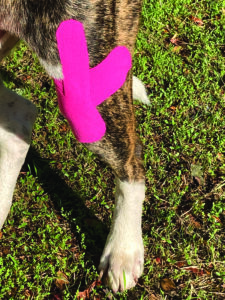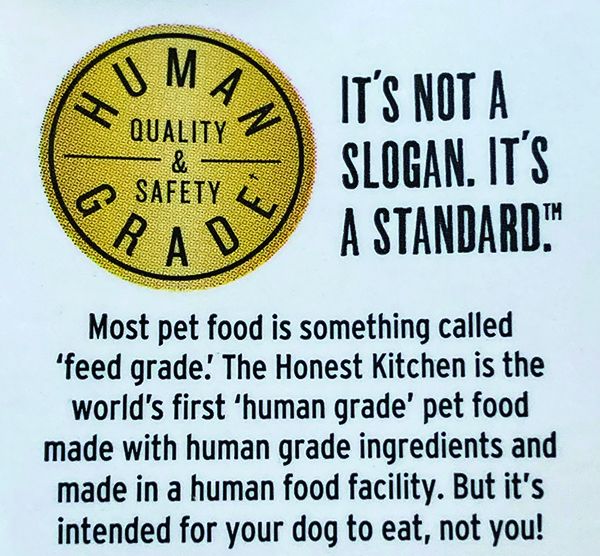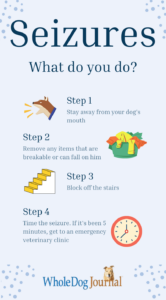When we think of tick-borne diseases in dogs, Lyme disease is typically the first thing that pops into our heads. But there are other serious diseases transmitted by ticks that dog owners should be aware of.
Lyme Disease in Dogs
Believe it or not, of all the tick-borne diseases, Lyme is clinically the simplest. It typically causes limited, classic symptoms and is easy to treat. It rarely causes serious disease. The one exception to this is if it gets into the kidneys. This is called Lyme nephritis, and it is always bad.
Lyme disease in dogs is caused by spirochete (spiral-shaped) bacteria called Borrellia burgdorferi and is spread by Ixodes species ticks (such as the deer tick and black-legged tick). The incubation period (time from tick bite to clinical disease) can be as long as two to five months. The organism migrates from the bite sight to the joint capsules.
The blood tests used in veterinary hospitals for detecting Lyme disease are antibody tests (see “Tests for Tick-Borne Diseases”). Today, these are commonly combined with heartworm antibody tests. In addition to the index of suspicion a positive antibody test gives, a diagnosis of Lyme disease requires history of tick exposure, classic clinical signs, and a positive response to treatment.
Some dogs will show mild signs of fever, inappetence, and lethargy, but the classic presentation is lameness with a painful, swollen joint or joints.
The treatment of choice is doxycycline, an oral antibiotic, for four weeks. Response to treatment is rapid, with resolution of signs typically within 24 to 48 hours. The prognosis is excellent, as long as the infection doesn’t get into the kidneys.
Because of the possibility of kidney involvement, and the severity of that scenario, any dog testing positive for Lyme should have a urine specimen checked for protein loss.
Lyme nephritis is thought to be immune mediated in nature. When pathogenic organisms combine with antibodies targeting them, they form substances called immune complexes. These immune complexes damage the kidneys, resulting in proteinuria (excessive protein in the urine) and kidney failure. Aggressive treatment of these patients with antibiotics and immunosuppressive therapy is occasionally successful, but the overall mortality rate with Lyme nephritis is, sadly, very high. Fortunately, the incidence of Lyme nephritis is fairly low compared to the incidence of Lyme-infected dogs overall.
Should we be vaccinating dogs against Lyme disease? The canine Lyme vaccination was introduced in 1992, but believe it or not, after all these years, there is still no consensus on this. There are arguments both for and against Lyme vaccination.
Opponents of Lyme vaccination express concerns regarding inconsistent efficacy, duration of immunity, and cost of the vaccine. They point out that vaccination doesn’t negate the need for tick prevention. Because the vast majority of Lyme disease cases in dogs are mild and easily treated, vaccination opponents feel we shouldn’t be subjecting dogs to the inherent risks associated with vaccines in general. They express ongoing concerns as to whether vaccination might actually make Lyme nephritis worse, if the dog were to get it (although, I must add, there is no scientific evidence to support this).
Proponents of Lyme vaccination believe it provides a second layer of protection against Lyme disease and Lyme nephritis should your tick prevention fail. They point out that Lyme vaccines have been around for years and have proven to be no less safe than any other vaccine for dogs. Dogs do not develop a natural immunity after infection so they are always vulnerable to reinfection unless they are vaccinated.
As a practitioner, I recommend every patient have a personalized risk assessment, based on lifestyle and environment. If the dog has zero risk of exposure to ticks, I do not recommend Lyme vaccination. If the dog has risk exposure, I recommend the vaccine, in addition to diligent tick prevention. In my hands, this has been a safe and effective approach to prevention of Lyme disease in dogs.
Anaplasmosis in Dogs
Anaplasmosis is the name of two different clinical syndromes caused by different (but related) bacteria.
Anaplasma phagocytophilum bacteria infect white blood cells, causing Canine Granulocytic Anaplasmosis (CGA). Anaplasma platys infect platelets, causing Canine Infectious Cyclic Thrombocytopenia (CICT). Both types of Anaplasma bacteria are carried by the same type of ticks that carry the spirochete bacteria that causes Lyme disease, which means coinfection with anaplasmosis and Lyme is possible.
For either type of anaplasmosis, the incubation period (from tick bite to the dog’s illness) is one to two weeks. Signs associated with both syndromes include fever, lethargy, inappetence, pale mucous membranes, weight loss, lymph node enlargement, and splenic enlargement. Dogs with CGA sometimes present with lameness. Dogs with CICT frequently present with evidence of a bleeding disorder, including bruising, blood in stool or urine, and nose bleeds.
Diagnosis starts with the same screening antibody test that tests for Lyme disease. Again, this only implies exposure. The best definitive test for active anaplasmosis is a polymerase chain reaction (PCR) test, although the cyclic nature of CICT may result in false negatives.
Treatment is doxycycline for at least 14 days. Anaplasmosis is an acute disease, meaning the organism does not stick around after treatment like some of the other tick-borne pathogens. Treatment is usually successful, and the prognosis is good.
Ehrlichiosis in Dogs
Ehrlichia canis and Ehrlichia ewingii are bacterial causes of this ehrlichiosis disease. They are spread by Rhipicephalus sanguineous (brown dog tick) and Amblyomma americanum (the Lone Star tick). The organisms infect circulating white blood cells. The incubation period is one to three weeks.
Acute symptoms of ehrlichiosis in dogs are like those of anaplasmosis: fever, lethargy, inappetence, lymph node enlargement, and splenic enlargement. With time, some dogs develop ocular and nasal discharge and lameness. Occasionally, an infection with Ehrlichia will cause neurologic derangements, such as incoordination and seizures.
A dog who makes it through the acute stage described above without treatment next enters the subclinical stage. During this stage, which can last months to years, the organism hides out in the spleen. The dog usually has no symptoms during this stage and either recovers spontaneously or moves on to the chronic stage where he becomes sick again.
The chronic stage, which carries the worst prognosis, can result in complete bone marrow depletion and secondary immune-mediated conditions resulting in bleeding disorders, ocular issues, and kidney failure.
As with anaplasmosis, the diagnosis of ehrlichiosis involves the point-of-care antibody test, followed by a PCR test. Treatment is doxycycline for 28 days. Acute cases typically respond quickly (one to two days) and carry a good prognosis. Chronic cases are much harder to clear and carry a guarded prognosis. It can take months of treatment, and some never respond. Monitoring involves serial PCR tests, complete blood counts (CBCs), and serum chemistry testing.
Babesiosis in Dogs
As with Anaplasma and Ehrlichia, there are two main bacteria that cause Babesiosis in dogs. Babesia canis is spread by the same tick (the brown dog tick) that spreads Ehrlichia, so coinfections are possible. This bacterium is most prevalent in the southern United States. A large percentage of Greyhounds from Florida test positive for Babesia canis.
Babesia gibsoni is also found in the United States. This one is interesting in that it is transmitted directly from dog to dog, through bite wounds, as opposed to tick bites.
Babesia organisms infect the dog’s circulating red blood cells. The incubation period is one to three weeks. Symptoms are like the other tick-borne disease described above (fever, lethargy, inappetence, lymph node enlargement, splenic enlargement), but the main symptom Babesia causes is anemia, which results in pale or jaundiced (yellow) mucous membranes and weakness.
Babesia cannot be detected in the point-of-care test that screens for the above-mentioned tick-borne diseases. A PCR test is required to detect infection with Babesia.
Fortunately, Babesia has low virulence, meaning it is not hugely aggressive as an infectious disease. Many infected dogs won’t even get sick. The ones who get the sickest are usually vulnerable (young puppies) or compromised (such as dogs who have had their spleens removed).
Asymptomatic, infected dogs are considered carriers, contributing to the spread of Babesia. The carrier state can sometimes evolve to a chronic state, as with Ehrlichia, where the dog becomes clinically ill and can develop secondary immune-mediated disease. These dogs take a long time to get better and sometimes require blood transfusions. The prognosis is guarded.
To make matters worse, treatment is complicated. It’s not our trusty doxycycline. Treatment usually involves an injectable medication called imidocarb diproprionate and/or a long course of multiple antibiotics or hard-to-find antiprotozoals, along with intense supportive care and treatment of secondary immune-mediated diseases. But don’t forget the upside, which is that many dogs infected with Ehrlichia never get sick.
Rocky Mountain Spotted Fever (RMSF) in Dogs
RMSF is caused by a bacteria called Rickettsia rickettsii. It is spread by Dermacentor species ticks (American dog tick, wood tick), the Lone Star tick, and brown dog tick. It causes acute, serious disease in dogs and humans.
The Rickettsia organism infects endothelial cells (the cells lining blood vessels). The damage to these cells causes systemic vasculitis, resulting in severe, widespread edema and tissue destruction. Fever, malaise, and neurologic signs are common. The incubation period may be as little as two days to as much as two weeks.
RMSF is not included in the point-of-care test that screens for Lyme, Anaplasma, and Ehrlichia. PCR tests are unreliable for RMSF, as the organism does not circulate in the dog’s blood. Instead, it adheres to blood vessel linings. The diagnosis is usually made using paired antibody tests, called acute and convalescent samples. A rise in antibody titer, combined with classic symptoms and a favorable response to therapy, is considered diagnostic for RMSF.
Because of the acute severity of this disease, treatment should be started right away, based on the index of suspicion. Doxycycline is again the treatment of choice for this bacterial infection.
The upside to this terrible disease? If caught and treated early, the prognosis is excellent. And the recovered dog often has a lifelong immunity afterward. In contrast, cases that are not caught and treated early typically suffer severe, life-threatening complications with a guarded prognosis.

There are a number of “point-of-care” or “in-house” and laboratory tests that can be employed to identify microorganisms that can cause disease in our dogs. Your veterinarian may suggest a test for tick-borne diseases as part of your dog’s routine annual examination; the test may be combined with a test for a heartworm infection. If your dog is displaying symptoms of disease that suggest one of the tick-borne diseases, a laboratory test may be recommended.
Antibody tests (also known as serology tests) detect the antibodies that a patient’s immune system produces in response to a disease-causing pathogen. Antibody tests tell us only if the dog has been exposed to the pathogenic organisms and has mounted an immune response against it. It does not confirm or refute active infection. Vets have several combination antibody tests at their disposal, including the Antech Accuplex, Idexx 4Dx (seen at right), and Zoetis Flex4 tests, each of which can detect antibodies to heartworms, Borrellia burgdorferi (the bacteria that causes Lyme disease), Anaplasma, and Ehrlichia.
Polymerase chain reaction (PCR) techniques detect pathogen-specific DNA from patients’ blood and is the preferred method for detection of several tick-borne bacterial infections during the acute phase of illness. PCR tests don’t work well for detecting the bacteria that causes Lyme disease or Rocky Mountain spotted fever but can accurately detect Anaplasma, Babesia, and Ehrlichia.
How To Prevent Tick-Borne Diseases in Dogs
Keeping ticks off your dog prevents all these diseases, plain and simple. Avoid known heavily tick-infested areas. Keep your lawn mowed short and your landscaping clear. Check for and remove ticks immediately after returning from outdoor excursions. And most importantly, use a reputable tick preventative on your dog. There are many safe and effective tick prevention choices out there, including topical and oral products, or collars.
For Lyme disease specifically, consider the Lyme disease vaccination for dogs.
What To Do if Your Healthy Dog Tests Positive for a Tick-Borne Disease
An annual screening for heartworm disease and tick-borne diseases is recommended for all dogs. This is typically done at your dog’s annual wellness exam with the point-of-care test described above, which tests for heartworm, Lyme, Anaplasma, and Ehrlichia.
If your otherwise healthy dog tests positive for Lyme, Anaplasma, or Ehrlichia, don’t panic. Remember these tests imply exposure only, not necessarily infection. I recommend that any dog who tests positive for any tick-borne disease have a complete blood count (CBC), serum chemistry, and urinalysis run. If everything is normal, most veterinary authorities believe treatment is not necessary. Monitor closely for clinical signs. And ramp up your tick prevention!
For Lyme-positive dogs, some veterinarians may recommend a second test called a Quantitative Lyme C6. If the number comes back high, they may recommend treatment. There is no hard and fast rule on this at this time. Some veterinarians may recommend treatment for Ehrlichia-positive dogs, in the spirit of preventing a chronic state. Again, there is no hard and fast rule on this at this time.
If your dog tests positive for Anaplasma or Ehrlichia, and you would like to know for sure whether they are actively infected or not, ask your veterinarian to run a PCR test.


